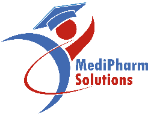Job-hopping — the practice of frequently changing jobs, typically within a short period — can sometimes carry a stigma, particularly in industries like pharmacovigilance, where continuity, expertise, and long-term commitment are highly valued. However, it's possible to overcome the stigma of job-hopping in pharmacovigilance, especially if you approach it strategically. Here are some key steps and considerations to help you address this issue:
1. Frame Your Job Changes Positively
- Professional Growth: When discussing your job history, highlight how each position allowed you to acquire new skills, gain diverse experiences, or deepen your knowledge in pharmacovigilance. Emphasize that each move was part of your career development, and you sought positions that helped you grow professionally.
- Learning Opportunities: Point out how each job offered a unique learning opportunity, such as exposure to different therapeutic areas, regulatory environments, or advanced pharmacovigilance technologies.
- Expanding Network and Knowledge Base: Job changes often allow professionals to broaden their networks, learn new practices, and adopt innovative methodologies. Frame these moves as efforts to stay at the forefront of industry trends.
2. Showcase Your Commitment to the Field
- Passion for Drug Safety: Make it clear that your commitment to pharmacovigilance is unwavering, even if your job history shows several transitions. Emphasize your passion for ensuring drug safety, protecting public health, and adhering to regulatory standards.
- Focus on Long-Term Goals: While your job history may include transitions, always tie it back to a long-term vision of advancing your expertise and making meaningful contributions to the field. This shows potential employers that you are focused on a career trajectory, not just short-term positions.
3. Highlight Key Achievements and Impact
- Quantifiable Success: Emphasize the positive impact you’ve had in each role, such as improving safety reporting systems, leading successful audits, reducing adverse event reporting timelines, or introducing efficiency in pharmacovigilance processes. Quantifiable achievements demonstrate your value regardless of how long you stayed in each job.
- Showcase Leadership and Initiative: Even if your roles were short-lived, mention instances where you took initiative, contributed to cross-functional teams, or made significant improvements in safety reporting or compliance. Leadership skills are valuable regardless of tenure.
4. Focus on Stability in Your Current Role
- Highlight Longevity in Your Current Role: If you’ve been in your current role for an extended period (e.g., more than a year or two), focus on your current stability. A longer tenure in one company after a series of short-term roles can help to dispel the notion of a “job hopper.”
- Mention Loyalty to Your Current Employer: If you’ve been in your current job for a while, emphasize your commitment to long-term growth within the organization, aligning your goals with the company’s mission, and your desire to see through important projects or initiatives in drug safety.
5. Explain the Reasons for Job Changes
- Career Exploration: If your job transitions were driven by a desire to explore different areas of pharmacovigilance (e.g., moving from signal detection to risk management), explain how these moves were made to explore different facets of the industry and enhance your expertise.
- Contractual/Temporary Positions: Many pharmacovigilance roles are project-based or contractual in nature. If you’ve held such roles, you can explain that the transitions were part of the nature of project work in the industry, which is common in pharmacovigilance and clinical trials.
- Relocation, Personal or Family Reasons: If applicable, you can mention personal reasons for job changes, such as relocations or family commitments. These are understandable reasons that many employers will respect.
- Company-Specific Challenges: If you experienced challenges such as restructuring, limited growth opportunities, or significant changes in company culture, briefly mention this, but be careful to focus on how you adapted and learned from the experience. Frame it in a way that demonstrates your ability to thrive in different environments.
6. Demonstrate Career Progression
- Increased Responsibilities: If your job-hopping involved taking on progressively more challenging roles, emphasize how each move allowed you to expand your scope of responsibilities. For example, transitioning from an adverse event reporting specialist to a signal detection or risk management role shows growth.
- Broadened Skillset: If you've moved to different types of roles (e.g., from safety reporting to pharmacovigilance strategy), explain how these transitions helped you build a well-rounded skill set, making you a more valuable asset to future employers.
7. Seek Recommendations and Mentorship
- Positive References: Seek out references from managers or colleagues who can speak to your strengths, work ethic, and contributions during each role. A strong recommendation can help counterbalance the stigma of frequent job changes.
- Mentors in the Industry: Having a mentor in pharmacovigilance, especially someone with long-term industry experience, can help guide your career decisions and provide insights into how to position yourself as a reliable, dedicated professional.
8. Position Yourself as a Specialist
- Unique Expertise: If your job transitions involved specializing in certain aspects of pharmacovigilance, such as signal detection, risk management, regulatory compliance, or clinical trial safety, emphasize this specialization. Many employers value deep expertise in a niche area more than broad experience across many roles.
- Certifications and Training: Highlight any certifications (e.g., CPP, RAC, GVP, etc.) that demonstrate your ongoing commitment to professional development and stability in your chosen field. Certifications show you’re dedicated to mastering the skills necessary for success in pharmacovigilance.
9. Stay Engaged in the Industry
- Continuous Learning: Continue participating in professional development activities, conferences, and seminars. Attending events (such as those hosted by DIA, ISPE, or RAPS) shows your commitment to the industry and your intention to remain involved, despite any past job changes.
- Contributions to the Industry: Engage in forums, write articles, or contribute to industry discussions on platforms like LinkedIn, which can demonstrate your thought leadership in pharmacovigilance. This is particularly valuable for building your reputation as a serious professional in the field.
10. Consider the Future
- Stability in Future Roles: If you plan to stay in a particular role for the foreseeable future, communicate your long-term intentions to potential employers. Let them know you are looking for an organization where you can make a lasting impact and continue to grow over the years.
- Choose Your Next Role Carefully: When considering your next job, choose roles that offer opportunities for growth and stability, allowing you to build a more solid career foundation.
Conclusion:
Overcoming the stigma of job-hopping in pharmacovigilance requires strategic framing of your career narrative. By focusing on professional growth, skills acquired, and a clear commitment to the drug safety field, you can show that your job transitions were part of your long-term career development. Demonstrating stability in your current role, explaining the rationale behind job changes, and positioning yourself as a specialist with a unique skill set can help you overcome the job-hopping stigma and advance your career in pharmacovigilance.
To learn more from related topics, please visit our website or newsletter at https://medipharmsolutions.com/newsletter/


No Comments